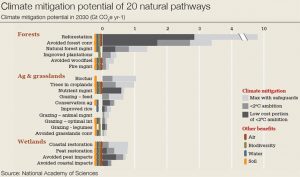Reducing emissions from deforestation and forest degradation and the role of conservation, sustainable management of forests and enhancement of forest carbon stocks in developing countries (REDD+) was first negotiated under the United Nations Framework Convention on Climate Change (UNFCCC) in 2005, with the objective of mitigating climate change through reducing net emissions of greenhouse gases through enhanced forest management in developing countries. Most of the key REDD+ decisions were completed by 2013, with the final pieces of the rulebook finished in 2015.
REDD refers to reducing emissions from deforestation and forest degradation; REDD+ is a voluntary climate change mitigation approach that has been developed by Parties to the UNFCCC. It aims to incentivize developing countries to reduce emissions from deforestation and forest degradation, conserve forest carbon stocks, sustainably manage forests and enhance forest carbon stocks.
“Parties shall adopt national policies and take corresponding measures on the mitigation of climate change, by limiting its anthropogenic emissions of greenhouse gases and protecting and enhancing its greenhouse gas sinks and reservoirs” (article 4.2(a) UNFCCC)
REDD+ actions are generally categorized into two broad types – policies and measures – but the lines between these types can be blurred. The term ‘policies’ refers to actions related to the enabling environment of REDD+ activities, while the term ‘measures’ refers to actions that are linked to field implementation.
REDD+ activities tend to focus on a comprehensive approach to mitigation and often cover:

